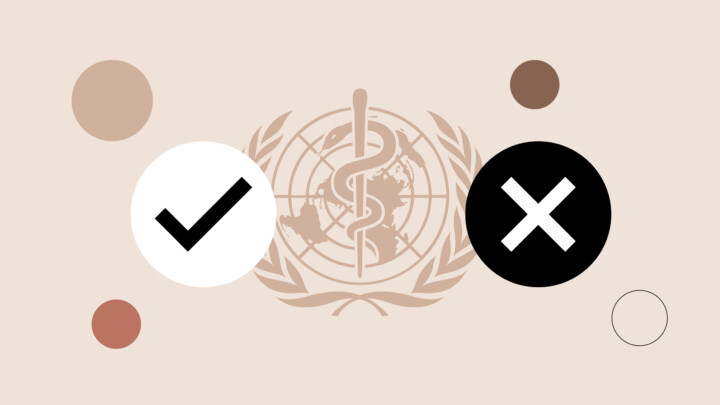
A patient’s health is determined by far more than what goes on at the doctor’s office. Social determinants of health (SDOH), i.e., non-medical factors like socioeconomic status, education, the neighborhood they live in and their ability to access social support services, are also at play in a patient’s overall wellbeing.
These factors have a profound impact on health, and doctors are finding new ways to recognize SDOH and integrate social support into their patient care services. When social aspects of a patient’s life are brought into the picture, doctors can provide more holistic care.
What are the social determinants of health?
SDOH are nonmedical factors that can influence health outcomes, including “the conditions in which people are born, grow, work, live, worship, and age,” according to the Centers for Disease Control (CDC). “These social determinants are multifactorial, where socioeconomic level constitutes an important pillar,” a Sermo community member notes.
In a Sermo poll, income and socioeconomic status were cited as having the most significant impact on patient well-being (32%). Access to healthcare and health services came in second (24%), and education level and literacy (20%) were a close third. Here’s how these and other factors can influence patient behavior and health:
1. Economic stability
Someone’s financial status can affect the quality of their health. A life expectancy gap of 18.1 years exists between the poorest and richest countries, according to the World Health Organization (WHO). Even within a country, the people in a lower socioeconomic position tend to have worse health because of the cost of high quality healthcare.
“Low socioeconomic status has a domino effect,” says one Sermo member and psychiatrist. “Education should include important basics such as nutrition, exercise, importance of reading, and social interaction.”
2. Education access and quality
Limited access to education can affect lifelong health. Higher education leads to more informed decision-making, and people with more education are more likely to exercise, limit alcohol and seek preventive health care.
3. Health care access and quality
It stands to reason that having limited access to quality healthcare can have a negative impact on a person’s health. A GP on Sermo highlights “difficulty in accessing quality health care” as a SDOH with “great impact” on health. “From primary care centers, it is very important to implement health education and support programs, especially in less favored neighborhoods,” they write.
4. Neighborhood and built environment
Where a person lives, including their physical environment, can also determine their health outcomes. Safe housing, safe transportation, access to clean water and access to nutritious foods can help improve health, while polluted or unsafe neighborhoods often correlate with higher disease rates and lower overall wellness.
5. Social and community context
Social support, discrimination, and community stability all influence health. The CDC notes that racism within a community drives inequities in terms of housing, education, and employment which can put people of color at a higher risk of poor health.

The most significant impacts of SDOH on patient well-being
Each SDOH can have a ripple effect on patients’ wellbeing in the following ways:
Chronic disease management
If a patient does not have a steady source of income, they may be unable to obtain the things they need for optimal health, such as nutritious food. Without the proper nutrients, they may be more susceptible to chronic diseases, such as heart disease, diabetes and cancer. Managing the disease is also difficult if they do not have reliable transportation to quality healthcare, or if they are uninsured and can’t afford to pay for the care they need.
Expanding health insurance coverage has been shown to meaningfully improve outcomes for low-income adults. Greater coverage is linked to better access to care, more frequent use of preventive services, and higher self-reported health. For individuals with chronic conditions, it’s also associated with improved medication adherence, stronger physician communication, and better overall health perception.
Adherence to treatment plans
Socioeconomic barriers can make it difficult for patients to follow prescribed treatment plans. Limited access to nutritious food, safe spaces for physical activity, or the financial means to purchase medication can all hinder adherence. Additionally, patients with lower education levels and health literacy may struggle to fully understand the purpose or importance of their treatment, reducing the likelihood of consistent follow-through.
Mental health challenges
Patients living in poverty and unstable conditions may live in a higher state of chronic stress than patients with more socioeconomic advantages, which can have a significant toll on mental health. Constant stress and financial hardship can put patients at higher risk for mental health issues like depression or anxiety.
Barriers to addressing SDOH in clinical practice
When providers aim to address SDOH in their practices, they can face significant barriers, as indicated by Sermo poll data. When members shared which barriers are most prevalent, the most common answer was lack of resources and social support (40%). Addressing social drivers of health often requires the formation of community support programs, which needs significant resources and government support to put into action. Without the money to make it happen, qualified social workers and the time to put into the creation of such a program, it is simply a dream instead of a reality.
The second most common answer was systemic barriers and policies that perpetuate disparities (27%). These can include factors like reimbursement models that don’t compensate providers for time spent on social needs, restrictive eligibility criteria for government aid or fragmented care coordination between health and social services. For example, a physician might identify that a patient’s asthma is being worsened by substandard housing conditions, but lack the mechanisms to connect that patient with housing assistance.
Lack of training and awareness about SDOH came in third, with 13% of votes. Many clinicians have never been taught how to systematically screen for social risk factors or to interpret the results of those screens.
5 strategies to address the social determinants of health
Here are some practical, real-world strategies that you can use to address SDOH on a day-to-day basis:
1. Identify SDOH needs.
Ask patients about social issues in a compassionate way, and emphasize that their answers will be confidential, and only used to connect them with helpful resources. This could include a screening process using standardized questions that help identify a patient’s SDOH needs. Several tools are widely recognized, including:
- PRAPARE (Protocol for Responding to and Assessing Patients’ Assets, Risks, and Experiences) developed by the National Association of Community Health Centers (NACHC)
- AHC-HRSN Screening Tool (Accountable Health Communities Health-Related Social Needs) developed by the Centers for Medicare & Medicaid Services (CMS)
- The Social Needs Screening Tool by the American Academy of Family Physicians (AAFP)
2. Connect patients with support services within and outside the healthcare system.
This may involve collaboration with social workers and community health workers, forming a widespread referral system.
You can also develop and maintain a list of social services available in your community, such as housing assistance, bus fare assistance and food programs, so patients know how and where to access these resources.
3. Partner with local schools, religious organizations, and other community groups.
By forming connections with local organizations, you may be able to provide healthcare opportunities outside of the clinic.
You can use your professional influence to advocate for more green spaces, low-cost daycare services, farmers’ markets and other beneficial changes to patients’ neighborhoods.
A Sermo member and plastic and reconstructive surgeon advocates for a multi-pronged approach, saying, “…Healthcare professionals should be coordinating with resources in the community to help [patients] who have [socio-economic] determinants that affect their health, such as job, instability, poor education, poor access to care. Health professionals should also be advocating on the national level in coordination with social and economic programs for these at risk patients to change policy and improve resources.. Lastly, healthcare professionals should be actively involved with their community resources to assist these patients with a cross reference platform.”
4. Use EHRs for screening to connect patients to resources.
Electronic health records (EHR) can be powerful tools for identifying and tracking SDOH needs. A family physician on Sermo notes that doctors and other HCPs often don’t have time to collect all the data that is needed to identify SDOH, but can make it part of their admission process to collect certain types of data and allow staff to identify risk factors, which can ultimately support patient wellbeing.
One Sermo user, a pediatrician at New York City Health and Hospitals, shared their experience collaborating with the Public Policy Lab to optimize preventive services within the general pediatric practice, describing, “Our shared goal is to optimize preventive services within the general pediatric practice. Here’s how we’re making a difference:
Leveraging Epic for Prevention: We recognize that prevention is key to community health. By integrating preventive services directly into the Epic system, we streamline access for both patients and providers.
Community-Centric Approach: Our practice is deeply rooted in the community we serve. We leverage available resources to deliver preventive services where they matter most ( As screened from the SDoH Screening)—right in our neighbourhood clinics. Whether it’s well-child visits or counseling on nutrition and safety, we’re committed to reaching families where they live and play.
Tracking and Accountability: Currently we are also working with [the] Epic system to [allow] us to track preventive services comprehensively. the aim is to monitor each visit, documenting the services provided and ensuring follow-up. By analyzing data, we can identify trends, measure compliance, and address any gaps in care. Our goal is to keep children healthy and prevent avoidable health issues.
Collaboration and Innovation: Working alongside nurses, medical assistants, and administrative staff, we create a collaborative environment. Regular team huddles allow us to discuss preventive strategies, share insights, and troubleshoot challenges. We’re also open to innovative solutions, exploring ways to engage families and improve health literacy.”
5. Garner community engagement and support through social media platforms.
By educating others and raising awareness of SDOH needs, physicians can help the public become informed consumers of healthcare. Healthcare content marketing through channels like social media can help you to spread awareness and build patient trust.

What SDOH means to doctors
As the healthcare industry becomes more aware of the social determinants of health, physicians are becoming advocates for their patients’ holistic well-being, connecting them to community resources, social services, and support systems that extend care beyond the exam room. Addressing non-clinical factors such as housing, income, and education within the healthcare system is necessary to achieve true health equity. However, this shift also introduces new challenges. Physicians already facing time constraints and administrative burdens must now navigate additional layers of care coordination and documentation.
Despite the administrative strain, many physicians continue to champion holistic approaches to care by recognizing and responding to the social realities their patients face. In doing so, they’re not only improving individual patient outcomes but also helping shape a future where health equity becomes standard practice.
Taking steps to achieve health equity
Understanding and addressing SDOH is a crucial step toward achieving health equity. When you take socioeconomic factors into consideration, you can get a more complete picture of a patient’s health, allowing for optimal healthcare decisions. If you take it a step further and assume a role as a community advocate to improve your patients’ SDOH, you can help form a wider system of social support.
Through the Sermo community, physicians can share SDOH insights, discuss strategies for addressing SDOH with limited resources and find support from peers who understand the unique challenges of integrating social factors into clinical practice. You can sign up for free to share your thoughts with more than 1.5 million existing members.















